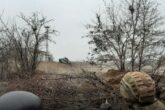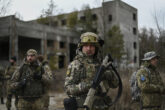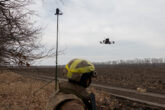May 01, 2017
We Need Mutually Assured Destruction
The United States and Russia — and before it, the Soviet Union — have been in a nuclear standoff since 1949. This 68-year-old standoff has been very tense at times, such as during the Cuban missile crisis of 1962. At other times it’s been defined by cooperation, like when Ronald Reagan and Mikhail Gorbachev signed the Intermediate-Range Nuclear Forces (INF) Treaty into effect in 1988. Today, however, that standoff is about to enter a new, far more dangerous phase.
American high schoolers still often hear the phrase “mutually assured destruction” in their lessons on the Cold War. Mutually assured destruction — or MAD, as it’s commonly known — is when each side in a nuclear standoff knows that the other could destroy it if things went wrong. This “balance of terror” forms the basis of nuclear deterrence. Each side is incentivized to avoid pushing the other too far, since doing so could lead to war. And if they do go to war — even a small war — the possibility that it could escalate to a nuclear war is too great to risk.
The world has changed a great deal in the almost 70 years since 1949, and today it is changing far more rapidly and in more ways than in decades past. This is especially true when it comes to military technology. Nuclear deterrence depends on each side’s ability to persuade the other that it will always be able to strike back. That is, even if the United States launched its missiles first, Russia would still be able to retaliate with enough force to obliterate the United States — or vice versa. But a series of new military technologies are about to enter the field. And when they arrive, they may pose a serious threat to U.S. and Russian secure second-strike capabilities. This could mean the end of MAD.
Read the full article at the National Review.
More from CNAS
-
Defense / Transatlantic Security
When Defense Becomes Destruction: Austria-Hungary’s Mistake and Ukraine’s RiskThis article was originally posted on War on the Rocks. The southeastern Polish city of Przemyśl, with its elegant 19th century Habsburg-era train station, remains one of the ...
By Franz-Stefan Gady
-
Defense / Transatlantic Security
Ukraine’s Catch-22 MomentThis article was originally published in the Financial Times. In Joseph Heller’s wartime classic, Catch-22, the protagonist Yossarian seeks out the US army surgeon Doc Daneeka...
By Franz-Stefan Gady
-
CNAS Insights | Budgetary Own Goals Undermine “Speed and Volume”
On November 7, Secretary of Defense Pete Hegseth laid out a plan to overhaul the Department of Defense’s (DOD’s) acquisition system. Placing an emphasis on delivering new capa...
By Philip Sheers, Carlton Haelig & Stacie Pettyjohn
-
Drones: Who Is Making the New Weapons of War?
From Ukraine and Russia to Gaza and Sudan, drones have become a key weapon of war. Which companies are making them, and profiting from this rapidly expanding but controversial...
By Stacie Pettyjohn




